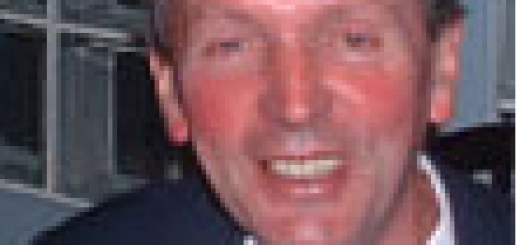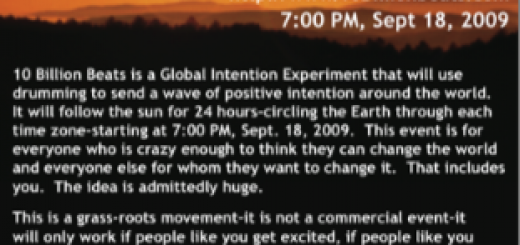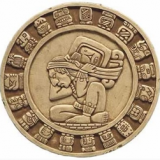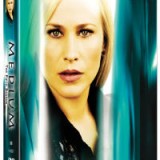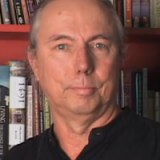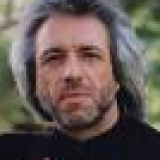The Bowl of Light Looks Into the Heart of Hawaiian Mystery
The following is a review of The Bowl of Light: Ancestral Wisdom from a Hawaiian Shaman (Sounds True) by Hank Wesselman, PhD.
Among indigenous cultures there is a growing urgency to bring forth native wisdom teachings, often specifically mandated by ancestral traditions (Maori, Aboriginal, Hopi, Iroquois, Maya), to help heal what is going terribly wrong with the Dominant Society and its death grip on the bio-sphere of the planet.
Books and classes abound on topics like shamanism, sweat lodges, vision quests, ayahuasca, and all things native. A decades long renaissance of Hawaiiana in the “developed” world continues with the publication of Dr. Hank Wesselman’s book The Bowl of Light.
Hawaiian Culture & Spirituality
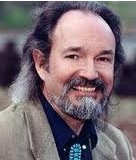 Compared to indigenous counterparts in the Americas, the Hawaiian culture is remarkably well preserved.
Compared to indigenous counterparts in the Americas, the Hawaiian culture is remarkably well preserved.
Captain Cook, the first Englishman in the islands (legend has it some Spaniards preceded him by 50 years), triumphantly stumbled upon the islands in the mid 18th century. By that time Indians from the eastern woodlands of the United States, throughout Mexico, Mayaland and Peru, to the Altiplano of South America had been systematically murdered and enslaved, their sciences and cultures burned into near oblivion. Brutal and cruel and blatantly illegal as the colonization, annexation and eventual statehood has been for native Hawaiians there are still vibrant cultural strains abounding.
The language is intact to a remarkable extent; hula (as essential to Polynesian/Hawaiian culture as libraries are to Europe) is preserved, taught and practiced worldwide; healing arts such as Lomi-Lomi massage are presented internationally by masters (and their students) who trace their genealogy back centuries. Though fried spam and eggs are considered local food and diabetes ravages the population, the “old ways” are still spoken about with joyous fondness and hushed reverence. Sacred sites, heiau, are meticulously maintained and legally protected. The Spirit of Aloha is alive and well in the islands, and willingly shared by respected elders (kupunas) and teachers (kumu).
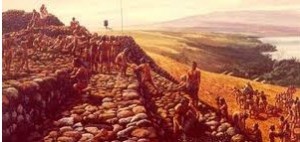 Max Freedom Long became aware of Hawaiian spirituality in the early part of the 20th century and published a series of books that are still good reading to this day. In the late 20th century, Serge King launched a lucrative career hawking his New-Age take on “Huna,” a term coined by Long referring to a supposed “magic code” of Hawaiian mystics, healers and Kahunas. Closer in authenticity are the classic volume Hawaiian Mythology by Martha Beckwith first published in 1940 and the excellent two volume Nana I Ke Kumu—Look To The Source by Mary Kawena Pukui, E. W. Haertig, M.D., and Catherine A. Lee in 1979.
Max Freedom Long became aware of Hawaiian spirituality in the early part of the 20th century and published a series of books that are still good reading to this day. In the late 20th century, Serge King launched a lucrative career hawking his New-Age take on “Huna,” a term coined by Long referring to a supposed “magic code” of Hawaiian mystics, healers and Kahunas. Closer in authenticity are the classic volume Hawaiian Mythology by Martha Beckwith first published in 1940 and the excellent two volume Nana I Ke Kumu—Look To The Source by Mary Kawena Pukui, E. W. Haertig, M.D., and Catherine A. Lee in 1979.
Makua’s Mythic Voyage
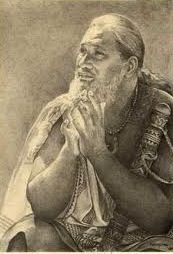
Love all you see, including yourself." ~ Hale
The Bowl Of Light is a story of a remarkable friendship and collaboration between two men of purpose: Hale Makua, a beloved teacher in the Hawaiian community; and Hank Wesselman, author, PhD, shamanic workshop lecturer with a strong background in anthropology.
It is also a vehicle of conveyance; a brief study of Hawaiian cosmology presented to a sympathetic and classically educated scientist. Hale Makua, as his lifetime of teaching wound down, found a published western scholar familiar with Hawaii with whom he felt he could entrust his writings, knowledge, and experiences as a kumu, a keeper of wisdom.
The exchanges between these two are so significant as to outweigh the poor writing style. Ponderous and repetitive prose is interspersed with dialogue so flat as to render it hardly believable as actual spoken conversation. That being said, one hopes the details of spiritual hierarchies, an Ancestral Grand Plan, the nature of the self (or selves) and other aspects the aging chief relates; such as Makua’s own mythic voyage on the second canoe from Sirius some 26,000 years ago; and the travels of Lono, “. . . a real man living in the mythic past” from the South Pacific through Hawaii and on to the state of Maine; have been accurately recorded and interpreted by the good Dr. Wesselman. They read as though they have been written from Wesselman’s memory much later and lack the spark of actual quotes.
Translating Hawaiian Mythology
The Bowl of Light is a translation of Hawaiian mythology, which is natively flowing and poetic, beautiful in its utterance off the tongue, into western metaphysical, psychological and religious terms. Linguistically, and in terms of world-view, this is a difficult match. Throughout the book we are belabored with a back and forth dialogue between the two that seem too similar in tone and emphasis. What has been conveyed for millennia through movement and chant, the convection of step, hand position and voice, rhythm and tone, atmosphere and mist, does not translate well into “neo-shaman, consciousness transformation, paradigm shifting” terms.
In the final chapter the author reports he has edited out the pidgin english of Makua and honored his wishes to have no recording device used. This is a great loss. Hale Makua was a fine orator and articulate conveyor of the multi-layered nuances of Hawaiian wisdom tradition which do not translate directly into the noun oriented structure of the English language. A highly intelligent and worldly man, it’s hard to imagine he needed much editing.
Chants of Introduction
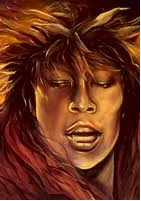
Art courtesy of Kathy Ostman-Magnusen
Throughout the unfolding dialogue, Wesselman takes great pains to portray himself and Makua—despite the endless fawning descriptions of “the kahuna”—as equals, beginning with a comparison of their respective royal lineage; Makua directly to the legendary Kamehameha, conqueror of all the islands except Kauai; Wesselman and his wife Jill to obscure European royal families.
Genealogy is extremely important to Hawaiians. Chants of introduction which precede any event or gathering may carry not only the parentage of the chanter, but the entire mythic history and cosmology of the Polynesian people. Thus the chants are both teaching tools and the vessels which preserve the lifeblood of the society.
Kahuna Mystics Direct Experience
Wesselman provides many fascinating, occasionally illuminating, analogous teachings and traditions from his broad knowledge of western tradition and other indigenous cultures. These seem to delight “the old chief” who encourages the Doctor to elaborate. Consequently what we the readers get throughout the book is an exposition of Wesselman’s philosophy, which repudiates western psychology as inadequate and Buddhism as deluded, with Makua nodding in agreement.
The kahuna mystics knew from direct experience that the dreamworld/spirit world and the dreaming are most definitely not illusions, despite what Buddhists and Western psychologists may proclaim. Nor is our Oversoul an illusion. They are real.
This casting of reality and illusion into dualistic opposition misses the crux of Buddhism, Jungian dream interpretation and American Indian concepts of dream reality. Wesselman’s problem seems to be with the word illusion, which from a scientific standpoint means false, not real. Mahayana Buddhist philosophy utilizes the word to represent the means with which we construct our “reality.”
The world arises with your perceptions.
—Buddha
Different World Views
Hopi world view considers the “real” objective world to be highly symbolic, and our dreams and visions to be less encumbered symbolic reflections of a profound and unspeakable truth. Jung’s great teachings were mostly cast as explorations of our dream states and the symbolic nature of consciousness.
The 13th century Buddhist reformer Nichiren pointed out:
This sutra (teaching) expounds the original mind of waking reality. However, because the beings were habituated in thought to the mind-ground of dreaming, the Buddha borrowed the language used in dreams to teach the waking reality of the original mind. Thus the words of the sutras are the language used in dreams, but its intent is to teach the original mind, which is waking reality.
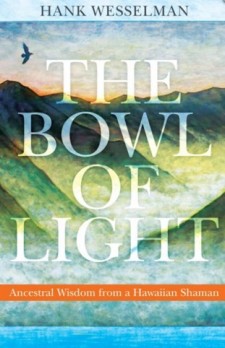 To his credit, Hale Makua points out to Wesselman that Buddha himself must have been an initiate and understood the nature of “the dreaming,” but that perhaps his followers didn’t get it. Wesselman, who claims to have studied Taoism and Buddhism for many years, misses a great opportunity to engage Hale Makua in a profound exploration of the connection between these systems of thought and Polynesian beliefs about dreaming the world into existence.
To his credit, Hale Makua points out to Wesselman that Buddha himself must have been an initiate and understood the nature of “the dreaming,” but that perhaps his followers didn’t get it. Wesselman, who claims to have studied Taoism and Buddhism for many years, misses a great opportunity to engage Hale Makua in a profound exploration of the connection between these systems of thought and Polynesian beliefs about dreaming the world into existence.
Hale Makua was of impeccable lineage and training in the traditions of Hawaiian Warrior Chiefs. Hawaiian friends I have talked to about him express great love for this man and honor his importance as a “keeper” of genuine Hawaiian wisdom. Hank Wesselman’s friendship and collaboration with Hale Makua will hopefully lead to skillfull and light handed editing, then publication of the box of notebooks Makua entrusted to Wesselman. One hopes the box has been stored properly against the book-eating tropical environment of Hawaii, because the occasion of the priceless box in the back seat is briefly mentioned in one of the last chapters and not referred to again.
Nonetheless, The Bowl of Light is a great story of initiation and ritual on the rim of a volcano, talk-story between two friends and colleagues, a treasure trove of knowledge and myth, and most of all a glimpse for the rest of us into the heart of Hawaiian mystery.
To learn more, click > The Bowl of Light: Ancestral Wisdom from a Hawaiian Shaman
Available as a Paperback, or as a Digital Book

Writer, photographer, raconteur, Curtis McCosco fled from academia to further his education in Haight-Ashbury and the streets of Hollywood.
He’s worked as a furniture maker, Moviola repairman, documentary film maker, Motown tech, carpenter, masseur, and explores the the worlds of indigenous wisdom and shamanism, Hermetic occultism, remote viewing, history, politics and the evolution of consciousness, all from a Buddhist perspective.
You can find more of his writing on his blog, NOOZINE.com.
